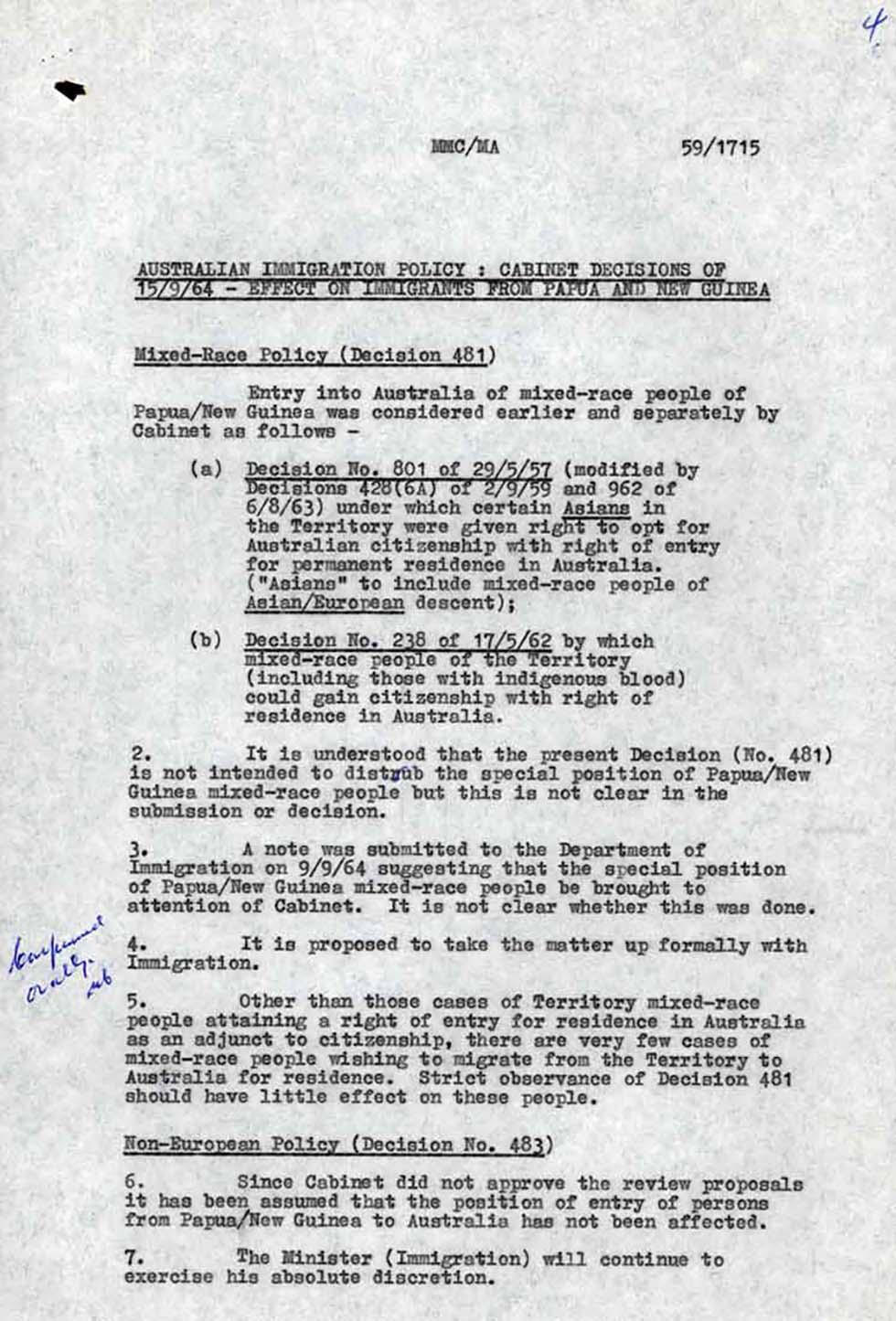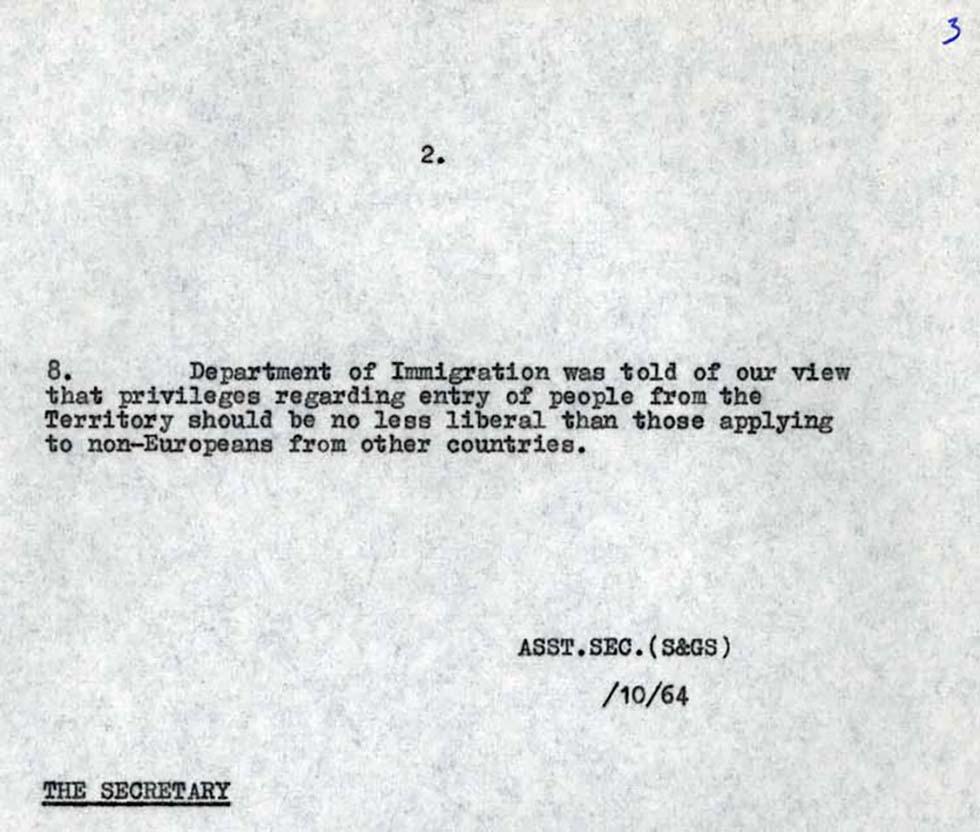

Aboriginal and Torres Strait Islander people should be aware that the National Archives' website and collection contain the names, images and voices of people who have died.
Some records include terms and views that are not appropriate today. They reflect the period in which they were created and are not the views of the National Archives.



[Page 1.]
[handwritten, blue ink, top right corner: 4]
MMC/MA.
59/1715.
[Heading, underlined.] AUSTRALIAN IMMIGRATION POLICY: CABINET DECISIONS OF 15/9/64 – EFFECT ON IMMIGRANTS FROM PAPUA AND NEW GUINEA
[Underlined.] Mixed-Race Policy (Decision 481)
Entry into Australia of mixed-race people of Papua/New Guinea was considered earlier and separately by Cabinet as follows –
(a) Decision No. 801 of 29/5/57 [underlined] (modified by Decisions 428 (6A) of 2/9/59 and 962 of 6/8/59) under which certain Asians [word underlined] in the Territory were given right to opt for Australian citizenship with right of entry for permanent residence in Australia. ("Asians" to include mixed-race people of Asia/European [word underlined] descent);
(b) Decision No. 238 of 17/5/62 [underlined] by which mixed-race people of the Territory (including those with indigenous blood) could gain citizenship with right of residence in Australia.
2. It is understood that the present Decision (No. 481) is not intended to disturb the special position o Papua/New Guinea mixed-race people but this is not clear in the submission or decision.
3. A note was submitted to the Department of Immigration on 9/9/64 suggesting that the special position of Papua/New Guinea mixed-race people be brought to attention of Cabinet. It is not clear whether this was done.
4. It is proposed to take the matter up formally with Immigration. [handwritten note, blue ink, left margin, illegible. Possibly reads 'Accepted orally', followed by initials, which are illegible.]
5. Other than those cases of Territory mixed-race people attaining a right of entry for residence in Australia as an adjunct to citizenship, there are very few cases of mixed-race people wishing to migrate from the Territory to Australia for residence. Strict observance of Decision 481 should have little effect on these people.
Non-European Policy (Decision No. 483) [underlined]
6. Since Cabinet did not approve the review proposals it has been assumed that the position of entry of persons from Papua/New Guinea to Australia has not been affected.
7. The Minister (Immigration) will continue to exercise his absolute discretion.
[Page 2.]
[handwritten, blue ink, top right corner: 3]
2.
8. Department of Immigration was told of our view that privileges regarding entry of people from the Territory should be no less liberal than those applying to non-Europeans from other countries.
ASST. SEC. (S&GS)
/10/64
THE SECRETARY [underlined.]
Learn how to interpret primary sources, use our collection and more.
